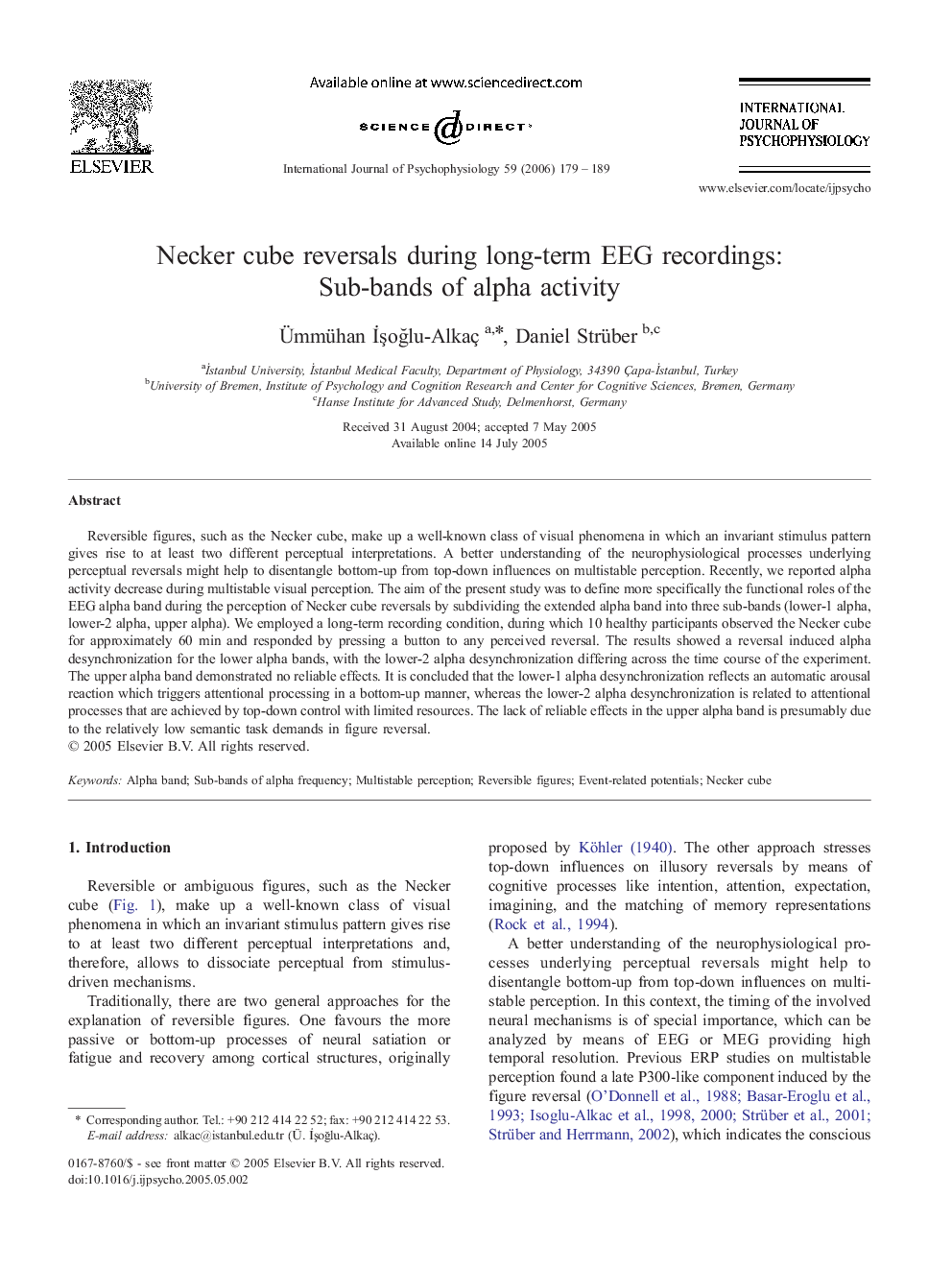| کد مقاله | کد نشریه | سال انتشار | مقاله انگلیسی | نسخه تمام متن |
|---|---|---|---|---|
| 931249 | 1474518 | 2006 | 11 صفحه PDF | دانلود رایگان |

Reversible figures, such as the Necker cube, make up a well-known class of visual phenomena in which an invariant stimulus pattern gives rise to at least two different perceptual interpretations. A better understanding of the neurophysiological processes underlying perceptual reversals might help to disentangle bottom-up from top-down influences on multistable perception. Recently, we reported alpha activity decrease during multistable visual perception. The aim of the present study was to define more specifically the functional roles of the EEG alpha band during the perception of Necker cube reversals by subdividing the extended alpha band into three sub-bands (lower-1 alpha, lower-2 alpha, upper alpha). We employed a long-term recording condition, during which 10 healthy participants observed the Necker cube for approximately 60 min and responded by pressing a button to any perceived reversal. The results showed a reversal induced alpha desynchronization for the lower alpha bands, with the lower-2 alpha desynchronization differing across the time course of the experiment. The upper alpha band demonstrated no reliable effects. It is concluded that the lower-1 alpha desynchronization reflects an automatic arousal reaction which triggers attentional processing in a bottom-up manner, whereas the lower-2 alpha desynchronization is related to attentional processes that are achieved by top-down control with limited resources. The lack of reliable effects in the upper alpha band is presumably due to the relatively low semantic task demands in figure reversal.
Journal: International Journal of Psychophysiology - Volume 59, Issue 2, February 2006, Pages 179–189